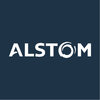Filter interviews by
Megha Engineering & Infrastructures Electrical & Instrumentation Engineer Interview Questions and Answers
Megha Engineering & Infrastructures Electrical & Instrumentation Engineer Interview Experiences
1 interview found
I applied via Company Website
Interview Questionnaire
3 Questions
- Q1. General questions about instruments, calibration process
- Q2. Control valve calibration,
- Q3. Knowledge about PLC
Interview Preparation Tips
Top trending discussions






Interview questions from similar companies

Interview Questionnaire
1 Question
- Q1. Hard core techanical

Senior Engineer Interview Questions & Answers
Larsen & Toubro Limitedposted on 10 Sep 2017
I appeared for an interview before Sep 2016.
Interview Questionnaire
1 Question
- Q1. Ocampo, basic electronics and C
Interview Preparation Tips
Duration: 1 hour
Total Questions: 50
Skills: Embedded Systems, C Programming
College Name: Sahyadri college of engineering

Senior Engineer Interview Questions & Answers
Larsen & Toubro Limitedposted on 10 Sep 2015
I applied via PLACEMENT
Interview Preparation Tips
Experience: Good detailed interview in terms of technical knowledge
Tips: Should be thorough with the projects you have done during the course
General Tips: be confident of what you put in your resume
Technical knowledge regarding projects undertaken during engineering should be sound
Be confident
Skills: Communication, Thinking capability, knowledge applying capability
College Name: V.E.S Institute Of Technology
Motivation: Opportunity to work in a renowned and core technical company
Funny Moments: We consider the interview panelists to be as tough as our viva externals. Interviewers are mostly on your side(contrary to viva professors :P)

Senior Engineer Interview Questions & Answers
Larsen & Toubro Limitedposted on 12 May 2018
Interview Questionnaire
5 Questions
- Q1. Pertaining to the mentioned roles and responsibilities in your resume
- Q2. Planning and work order creation
- Q3. Piling activities
- Q4. Introduction
- Q5. Cross checking of documents
Interview Preparation Tips
Experience: On the criteria that I scored atleast 60% overall and had no gap between job/s.

I applied via Recruitment Consultant and was interviewed in Sep 2019. There were 3 interview rounds.
Interview Questionnaire
2 Questions
- Q1. Question about material reconciliation, allowable wastage question based on previous work experience
- Q2. It's not easy to describe it in a few words because of the interview time is more
Interview Preparation Tips

Interview Questionnaire
5 Questions
- Q1. Seismic design of building, criteria, type of checks in building with respect to seismic, analysis approach
- Q2. Pile and foundation detail, structural system in building, shear wall, dual system implications
- Q3. Steel structure- Class of section, connection detail, slender member design criteria
- Q4. Building irregularities type
- Q5. Nature of scope of work performed, understanding of coordination approach, software knowledge

I applied via Referral and was interviewed in Feb 2021. There were 3 interview rounds.
Interview Questionnaire
4 Questions
- Q1. Question Related to last assignment.
- Q2. How was my last job profile?
- Q3. Willing to relocate?
- Q4. Opportunity for better j9b profile
Interview Preparation Tips

Senior Engineer Interview Questions & Answers
Power Mech Projectsposted on 10 May 2023
I appeared for an interview in Nov 2022.

(2 Questions)
- Q1. Turbine maintenance overhauling related interview
- Q2. Ready to face interview

I applied via Approached by Company and was interviewed before Oct 2022. There were 3 interview rounds.
(2 Questions)
- Q1. What is your name
- Q2. Explain your self
(3 Questions)
- Q1. Explain your self
- Q2. Are you know about wood governing
- Ans.
Wood governing refers to the regulations and standards that govern the use of wood in construction and engineering projects.
Wood governing includes codes, standards, and regulations related to the design, construction, and maintenance of wooden structures.
Knowledge of wood governing is important for ensuring compliance with safety and quality standards in engineering projects.
Examples of wood governing organizations in...
- Q3. How maintain furnace draft
- Ans.
Maintaining furnace draft involves controlling air flow to ensure proper combustion and heat transfer.
Regularly clean and inspect the furnace and chimney to prevent blockages
Adjust the damper to control the amount of air entering the furnace
Use a draft gauge to monitor and adjust draft pressure
Install a barometric damper to automatically regulate draft pressure
Consider installing a draft inducer to improve draft in low
(2 Questions)
- Q1. Why leave your previous company
- Q2. What's your expectation salary
Interview Preparation Tips
Megha Engineering & Infrastructures Interview FAQs
Tell us how to improve this page.
Megha Engineering & Infrastructures Interviews By Designations
- Megha Engineering & Infrastructures Senior Engineer Interview Questions
- Megha Engineering & Infrastructures Civil Site Engineer Interview Questions
- Megha Engineering & Infrastructures QA QC Engineer Interview Questions
- Megha Engineering & Infrastructures Civil Engineer Interview Questions
- Megha Engineering & Infrastructures Store Executive Interview Questions
- Megha Engineering & Infrastructures Senior Civil Engineer Interview Questions
- Megha Engineering & Infrastructures Graduate Engineer Trainee (Get) Interview Questions
- Megha Engineering & Infrastructures Engineer Interview Questions
- Show more
Interview Questions for Popular Designations
- Instrumentation Technician Interview Questions
- Senior Electrical Instrumentation Engineer Interview Questions
- Control & Instrumentation Engineer Interview Questions
- Instrumentation Supervisor Interview Questions
- Senior Instrumentation Technician Interview Questions
- Manager Instrumentation Interview Questions
- Assistant Manager Instrumentation Interview Questions
- Senior Electrical Engineer Interview Questions
- Show more
Interview Questions from Similar Companies
Fast track your campus placements

Megha Engineering & Infrastructures Electrical & Instrumentation Engineer Reviews and Ratings
based on 2 reviews
Rating in categories
|
Engineer
865
salaries
| ₹2.2 L/yr - ₹7 L/yr |
|
Senior Engineer
841
salaries
| ₹3.2 L/yr - ₹11.5 L/yr |
|
Associate Manager
513
salaries
| ₹4.8 L/yr - ₹15.8 L/yr |
|
Mechanical Engineer
388
salaries
| ₹2.1 L/yr - ₹7.3 L/yr |
|
Civil Engineer
344
salaries
| ₹2.2 L/yr - ₹7.6 L/yr |

Larsen & Toubro Limited

Shapoorji Pallonji Group

Alstom Transportation

Tata Technologies
- Home >
- Interviews >
- Megha Engineering & Infrastructures Interview Questions >
- Megha Engineering & Infrastructures Electrical & Instrumentation Engineer Interview Questions













